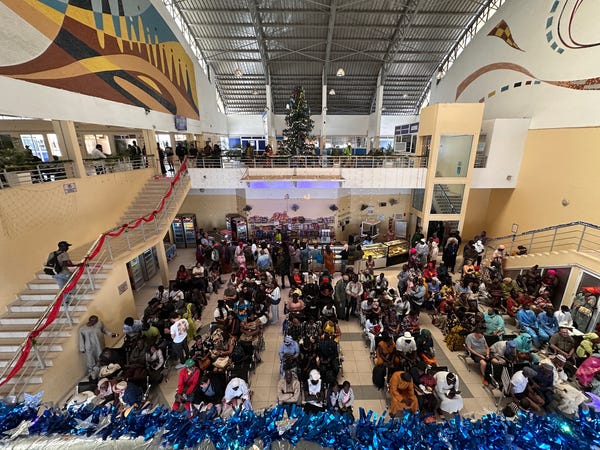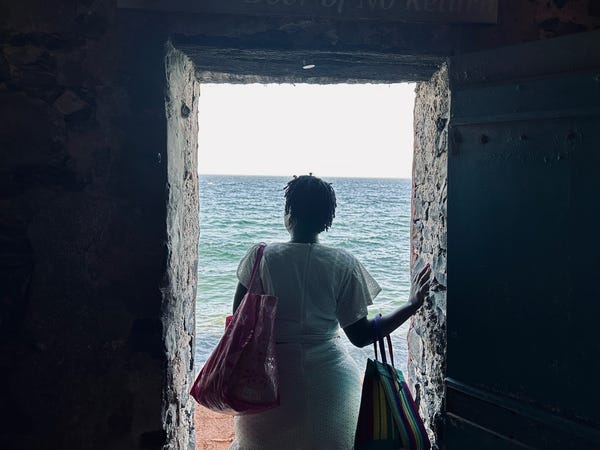
The terminal for the ferry to Gorée Island, located about 30-mins south of Dakar, Senegal, was packed with people on a warm day in early January this year: workers, merchants, and tourists. Tourists like me, ostensibly in the country for a writing workshop, and tourists like the old French-speaking white couple seated to the right of my group. An old Senegalese couple was sitting with them. Luggage was lined up in front of the four.
I was comforted by the sight of the two couples. Friends. Perhaps they all lived in the same retirement complex or attended the same church. For me, however they were connected, seeing them together was proof that Senegal was moving past its separatist, colonialist history.
I lost them as we boarded the ferry and set sail to the last piece of homeland my ancestors probably saw after being kidnapped and herded onto ships.
Our wonderful guide, Kenza Sall, took charge when we landed, showing us various points of interest: the old Protestant church, which was the first holding pen on the island for captured Africans; the old Catholic church, which displayed a faded banner showing a lily-white Jesus saving the Africans; then the House of Slaves and its infamous "Door of No Return", the opening through which some of my ancestors were pushed and whipped through to board ships to the Americas. All while they were chained together with 10kg weights.




As if on cue tears flowed as I stood in the door. Normal for Black Americans I was told.
Then I felt a spark of anger.
Normal as well.
I backed away and walked to the entrance / exit of the building. And that's when I saw them out of the corner of my eye: the two couples. The old white couple was leaving the building empty handed.
The old Senegalese couple trailed behind, dragging the luggage I'd seen lined up in front of them in the ferry terminal. Naiveté slapped me in the face.
And my spark of anger morphed into full blown rage.
****






